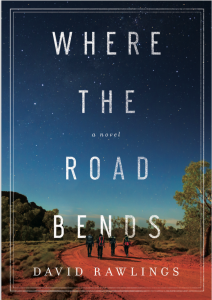by David Rawlings, @DavidJRawlings
We need to show, not tell. You know that, if you’ve spent five minutes reading anything about writing novels.
But how do you do it? The writers I talk with often say that they often tell first, and have to work at showing the reader the story.
It’s one thing to be reminded of it, but how do you head toward showing while not falling into the trap of telling? It’s a skill, one that you develop over time, but I wanted to share three tips with you to help you approach this often-daunting part of writing.
Three tips for showing
- Look for those characterizations that could fit easily in a character’s Facebook profile
Find those statements that are just descriptors – phrases about age, gender, occupation, presentation – and reconsider them through this lens…
… how do you know these descriptors are right?
Turn them into observations – what would it look like to see them?
- “She was 87” becomes “the papery leather of her skin…”
- “He stood tall” becomes “he towered over the conversation…”
- “His red hair” becomes “the sheen on his red hair glowed in the firelight of his anger”
- “Her simple dress” becomes “the plain fashion her stretched savings could afford …”
- “He was her father” becomes “his fists clenched when her name found its way into the barrage of insults that flowed”
This is what the transformation looked like from the first draft to the published version of my debut novel The Baggage Handler:
- First draft: “David was an angry man” became “David huffed and reached into his pocket for another antacid.”
- First draft: “He was a know-it-all” became “At least that was his self-diagnosis of indigestion, with the help of Dr. Google.”
- First draft: “She was embarrassed she hadn’t done her makeup” became “She squirmed under the inspection, acutely aware of hair that was the victim of a predawn start, makeup still in her suitcase, and bags under eyes that wouldn’t have been out of place on the carousel.”
None of these are perfect – and require further editing and consideration – but you’re heading in the right direction of showing the reader your character, and engaging with their imagination.
Another tip: find the common word in my first draft examples from The Baggage Handler. Search that word in your manuscript, and that’s something you can rework.

- Look for those characterizations that could be in a LinkedIn profile for a character, or a checklist item on AirBnB or Tripadvisor for a location.
The same deal goes for locations. If it’s a flat statement that could appear in a real estate ad about your location, imagine the feeling it leaves with you if you walked past or experienced it yourself. Or perhaps don’t focus on what it is … but what WAS. How does it stand apart from other locations like it? Tell the story of the location as if it was a character.
This is what the transformation looked like from the first draft to the published version of my latest novel Where the Road Bends:
- First draft: “It was a long flight to Australia” became “Their plane hovered over a sea of black—the middle of the Pacific—but they still had seven hours to go. Australia was a long way away, but this was ridiculous. She’d woken from a good night’s sleep, only to find there was enough time for another one.”
- First draft: “The Australian bush was exquisitely beautiful” became “In every direction was a picture-perfect scene waiting for capture.” (this is using the photograph at the top of this post).
- First draft: “The air conditioner was chilled relief” became “The blasting air conditioner chilled her overheated skin to goose bumps.”
Again, none of these are perfect, but I’m heading towards my aim of having my reader experience the location, and given them the chance to immerse themselves in it.
Note: that same word appears again in these first draft examples from Where the Road Bends. Search-and-destroy this word in your own writing!
- Give yourself slack to tell in your first draft. Hey, it’s a first draft, that isn’t going to be seen in the light of day. So just get your story on the page, as it gives you something to work with for your second draft. You can treat the first draft as scaffolding; the second as decoration.
Now, when you’re editing toward a second draft, apply the first two steps everywhere. Look for those descriptors and ensure you’re swapping them out with something that paints a picture in the reader’s mind.
Those are some tips I’ve used to move toward showing and away from telling. Why not share yours – what have you tried that you’ve found works for you?
Four friends reconnect fifteen years after graduation on a promised trip to the Australian outback. Time has changed them. At graduation life was all about unfulfilled potential. Fifteen years down the track, it feels a lot like regret.
As they get lost in outback Australia they find more than harsh beauty of an unspoilt land… … they discover how the road of life delivered them to where they are now.
And getting back requires them to determine where they’ll go from here.

Based in South Australia, David Rawlings is an award-winning author, and a sports-mad father-of-three with his own copywriting business who reads everything within an arm’s reach. He writes that take you deeper into life, posing questions of readers to explore their own faith and how they approach life.
Where the Road Bends – a novel based in outback Australia – is out now! Why not take a virtual vacation during your time at home?
David’s debut novel – The Baggage Handler – won the 2019 Christy Award for First Novel. His second novel – The Camera Never Lies – focuses on honesty in relationships and is now available.
He is currently signed with Thomas Nelson and represented by The Steve Laube Agency.

